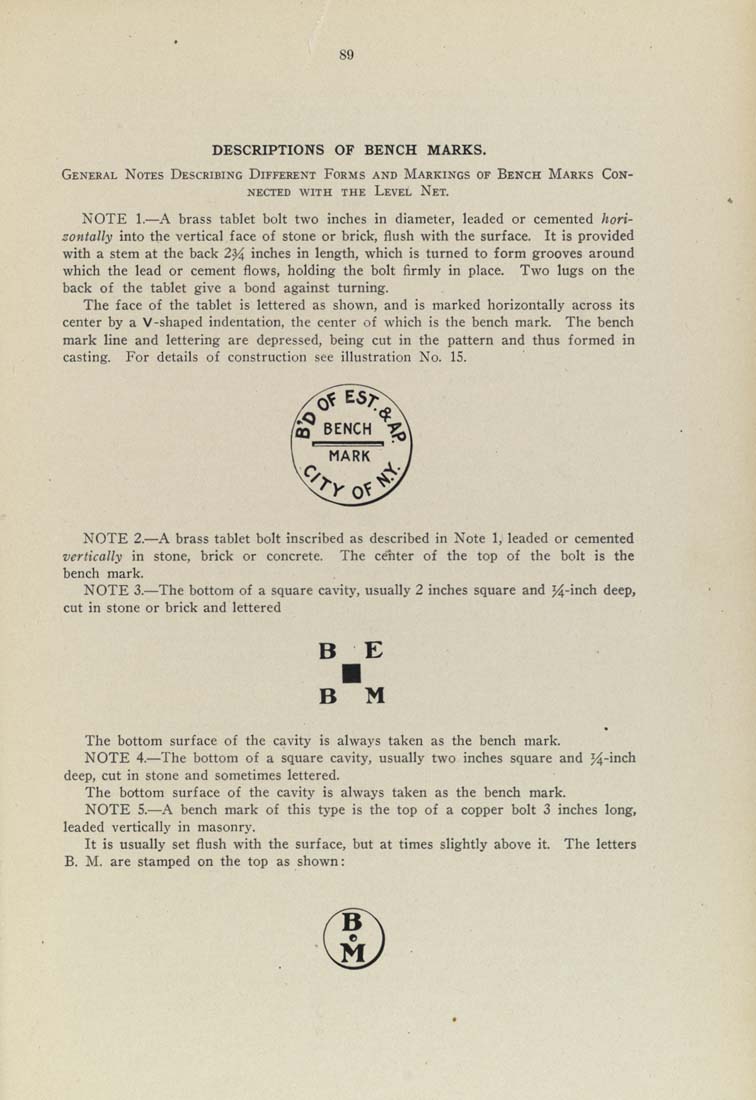DESCRIPTIONS OF BENCH MARKS.
General Notes Describing Different Forms and Markings of Bench Marks Con¬
nected WITH THE Level Net.
NOTE 1.—A brass tablet bolt two inches in diameter, leaded or cemented hori-
sontally into the vertical face of stone or brick, flush with the surface. It is provided
with a stem at the back 2^ inches in length, which is turned to form grooves around
which the lead or cement flows, holding the bolt firmly in place. Two lugs on the
back of the tablet give a bond against turning.
The face of the tablet is lettered as shown, and is marked horizontally across its
center by a V-shaped indentation, the center of which is the bench mark. The bench
mark line and lettering are depressed, being cut in the pattern and thus formed in
casting. For details of construction see illustration No. 15.
NOTE 2.—^A brass tablet bolt inscribed as described in Note 1, leaded or cemented
vertically in stone, brick or concrete. The center of the top of the bolt is the
bench mark.
NOTE 3.—The bottom of a square cavity, usually 2 inches square and j4-'"ch deep,
cut in stone or brick and lettered
B E
■
B M
The bottom surface of the cavity is always taken as the bench mark.
NOTE 4.—The bottom of a square cavity, usually two inches square and J4"i"<^h
deep, cut in stone and sometimes lettered.
The bottom surface of the cavity is always taken as the bench mark.
NOTE 5."—A bench mark of this type is the top of a copper bolt 3 inches long,
leaded vertically in masonry.
It is usually set flush with the surface, but at times slightly above it. The letters
B. M. are stamped on the top as shown:
(D
|








